With just over 3 weeks to go before we restart operations, we can’t tell you how excited we are. Itineraries being prepared, labels being printed, packs being sent to customers, hotels being paid. All we need is some warm weather to go with this wonderful sunshine!
April has been largely dry and we have not had to update our alerts page for some weeks now. Even the muddiest of paths are totally dry. However, this dry weather brings a new risk: fires. With lockdown restrictions easing, neighbourhood police have been patrolling parts of the Ridgeway close to the Thames Path. As its name suggests, the Ridgeway is on higher ground and therefore more susceptible to fire. Nonetheless it’s a timely reminder for us all to be vigilant when on the Thames Path.
Steps are being taken to establish a dedicated open-water swimming area near Henley. The council are investigating the possibility of marking off an area near Marsh Lock with buoys. Open-water swimming is becoming increasingly popular and we have seen numerous swimmers in the Thames over the last few weeks.
And we’ve added another route to our Suggested Detours page: this is to use the Ridgeway from just past Wallingford down to Goring, thus avoiding the road walk through Moulsford. The difference in mileage is negligible and you get to visit the church of St John the Baptist at Mongewell.
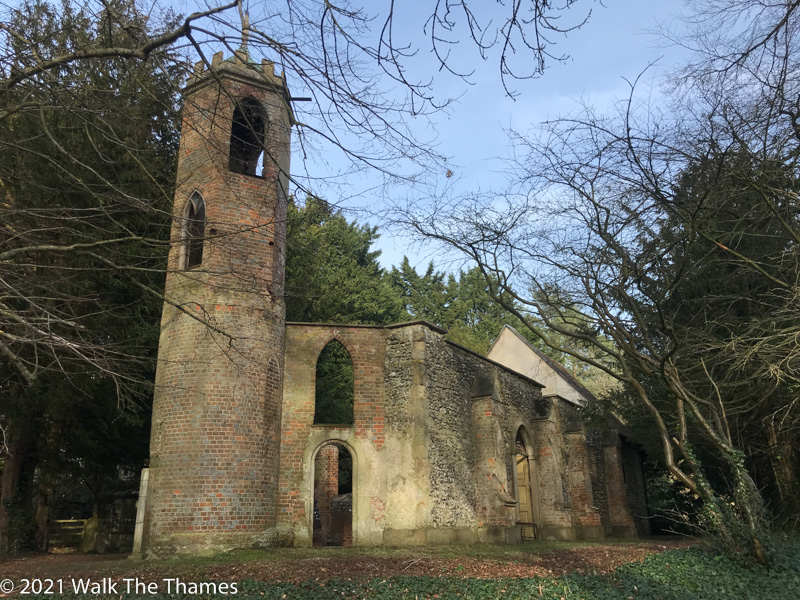
It can be very confusing trying to work out what’s open and what’s not. The basic rule of thumb is this:
Gardens are already open (examples: Hampton Court Gardens, Kew Gardens, London Wetlands). Cafes with outdoor seating areas are also generally open.
Museums, galleries and palaces are all scheduled to re-open on May 17 (examples: Ashmolean Museum, Windsor Castle, Tate Modern).
Most of these establishments will require pre-booking so please check their websites beforehand.
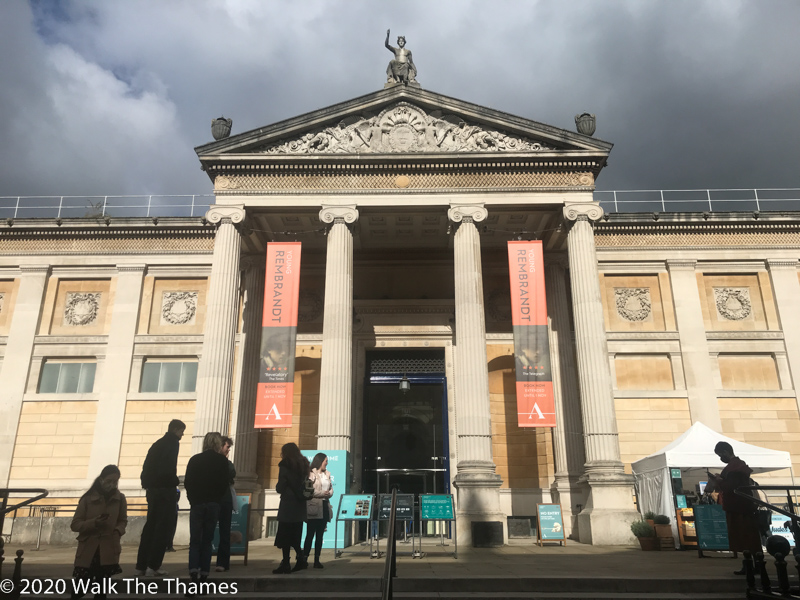
We’ve recently learnt that Premier Inn and Travelodge are both currently advertising a policy of no left baggage. This is to avoid unnecessary contact during the pandemic. It is unclear whether they will change their policy once the indoor hospitality restrictions are lifted in May. Bear in mind that some of their hotels may currently be open for key workers and/or quarantine. However, if this policy does not change, it will create difficulties for all baggage transfer services, including our own. We will watch this space and update you accordingly. We don’t know of any other accommodation providers operating this policy.
Eels are a critically endangered Thames fish. Once thriving on the river, they were a source of cheap protein. After all, how did Eel Pie Island at Twickenham get its name? But to thrive, they need to be able to travel upstream before returning to the Atlantic Ocean to spawn. Weirs and dams on Thames’ tributaries have impeded this. The Thames Catchment Community Eels project is looking for volunteers to be trained to assess and map barriers to eel migration. More details can be found here.
We all love the sight of bluebells which are now starting to appear. However, a word of warning from the National Trust: “bluebell woods are particularly sensitive to footfall and if their leaves are damaged they can struggle to grow back, so please enjoy them responsibly”.
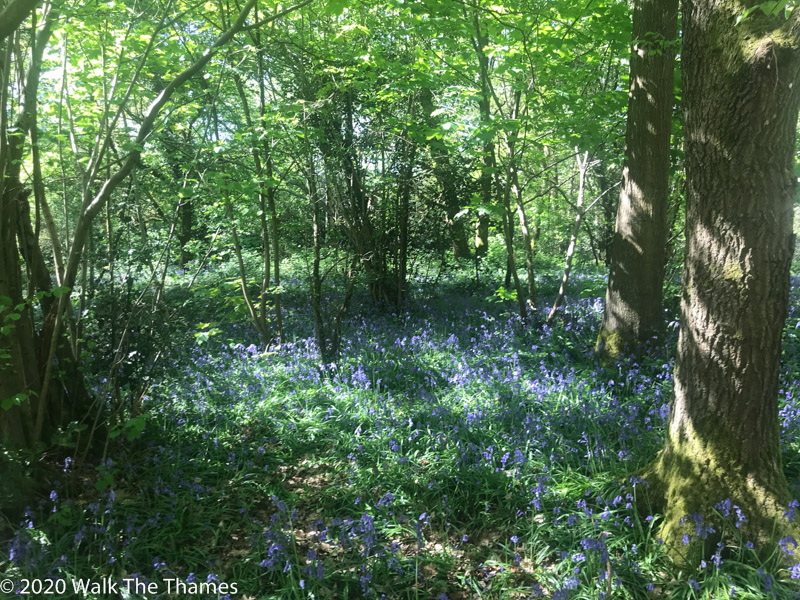
We wrote recently that we took some time over the Easter weekend to re-explore the Thames Path around London. So, this week, we’re bringing you this wonderful section of the Path. As with the rest of the Tidal Thames upstream from Greenwich, you have a choice of left or right bank. On this occasion we have chosen the right bank, which takes us through Bermondsey, Rotherhithe and Deptford. We will save making a comparison with the left bank for another time.
Assuming you have already walked downstream through London, you will be amazed at how swiftly London changes, once past Tower Bridge. Since as far back as Hampton Court you will have walked for 25 miles through park lands, past palaces and office blocks, and through affluent residential neighbourhoods. In the space of a couple of miles, all this changes.
And it all comes down to shipping. Ships used to only travel as far as London Bridge, a half mile upstream from Tower Bridge. They couldn’t get any further. So the area downstream from London Bridge, around Tower Bridge, was the original port and is still known as the “Pool of London”. Hence, walking downstream from Tower Bridge, you immediately notice wharf buildings: Butler’s Wharf being a noticeable example, now lined with a row of attractive restaurants.
At the end of Butler’s Wharf we meet our first dock: St Saviours. A footbridge at the mouth of the dock (which has been closed in recent times due to ongoing works) provides an excellent vantage point. You can just imagine the industry that must have gone on here as boats lined the wharf to be unloaded. Charles Dickens set Bill Sykes’ den nearby.
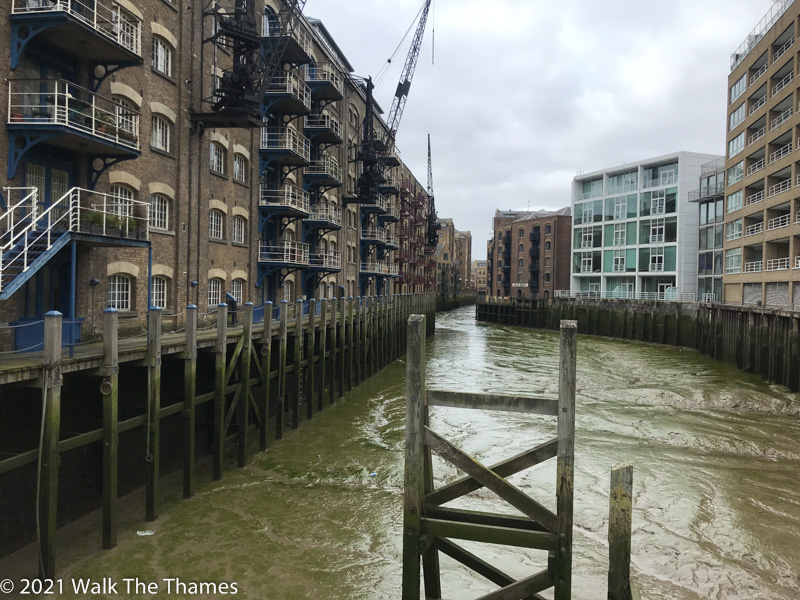
Across St Saviours Dock we find ourselves in Bermondsey and we must move away from the riverside and follow Bermondsey Wall, a narrow street threading its way between tower blocks. The Path tries to follow the riverside as much as possible but some of the way is taken up by a huge Tideway base, constructing London’s super sewer.
We rejoin the river at a park close to The Angel pub. Here a set of statues have been erected in dedication to the work of Dr Salter, a physician who set up a surgery for the poor of Bermondsey. His wife became mayor of Bermondsey and his daughter died in childhood of scarlet fever. Both have statues too.
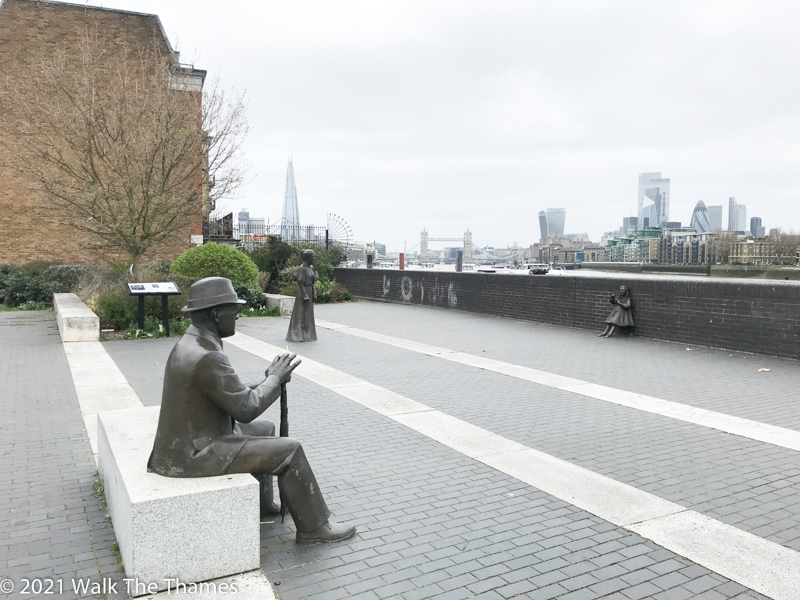
Quite where Bermondsey ends and Rotherhithe begins remains a mystery but you know you have reached Rotherhithe when you see the church of St Mary’s, the present structure dating back to 1715. As you approach the church on Rotherhithe Street, a narrow lane, you cannot but notice the gantries above which, presumably, once provided access between the various buildings but now serve as rather unusual roof terraces.
Immediately past the church is the Mayflower Pub, closed of course when we passed it, but now open on its terrace. Its name pays homage to the Pilgrim Fathers who set sail from Rotherhithe in 1620 before stopping at Southampton and Plymouth for the New World.
Opposite the Mayflower is the Brunel Museum, again closed. The site is close to one of the entrances to the Rotherhithe Tunnel, the first tunnel to be built under a navigable river. It opened in 1843 and was built by Marc Brunel and his son, Isambard. Once frequented by pedestrians it is now used by the London Overground railway network. The shafts at both ends of the tunnel are visible from the Thames Path, the other end being in Shadwell across the water.
Leaving Rotherhithe, we cross the entrance to Surrey Water, the bridge being an enormous Bascule bridge, built in the 1930’s and no longer able to lift itself. As the Path rounds the top of the peninsula we alternate between the road and a Thameside path, much time being absorbed walking down blind alleys. Occasionally steps lead down to the river which, tide permitting, will allow some mudlarking.
As you round the peninsula, Canary Wharf comes into view, no more dramatically than at Old Nelson Dock where Hilton’s DoubleTree has established a hotel amongst the former warehouses. There is a Thames Clipper stop here.
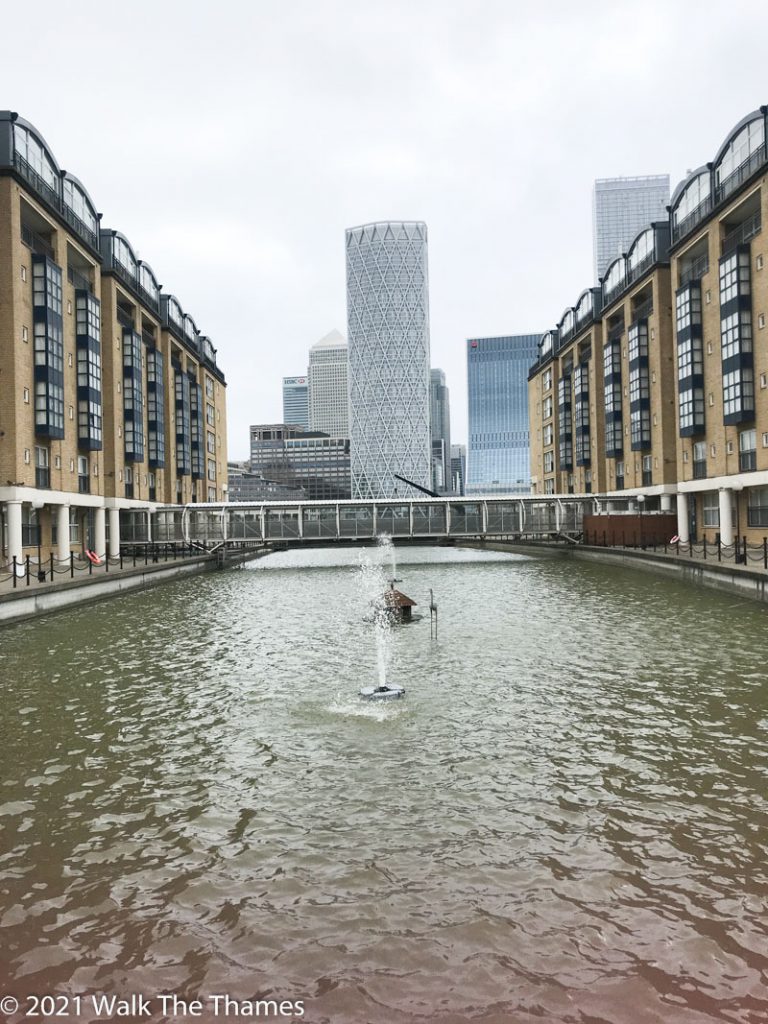
A few yards further on the Path passes through Surrey Docks Farm, a community farm complete with livestock. It’s a good place to stop for a cup of tea. Don’t worry. There’s an alternative route if the farm is closed.
Past Greenland Pier, site of another Thames Clipper stop, we enter Deptford where we are forced away from the river for quite some time. Though steeped in shipbuilding history, this is not apparent as you walk through a number of parks and housing estates on your way to Greenwich. We rejoin the river close to Deptford Creek where a monument stands to Peter the Great of Russia, who came here to study shipbuilding.
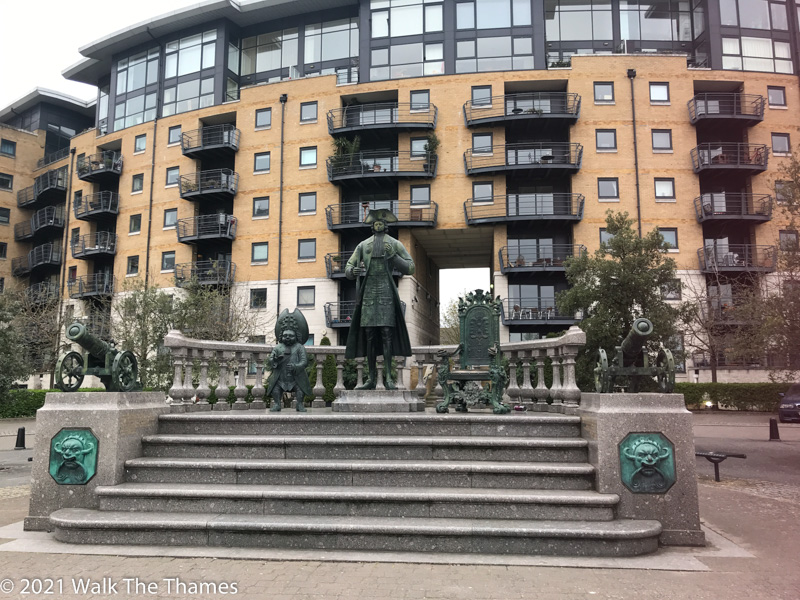
It’s now just a short riverside walk to Greenwich. This is possibly one of the most fascinating stretches of the Thames Path. True, the section through Deptford is forgettable, but Rotherhithe must be explored at leisure. Allow yourself plenty of time for this section. After all, it’s not a race!
Bye for now!
Ready to book?
| Cookie | Duration | Description |
|---|---|---|
| cookielawinfo-checkbox-analytics | 11 months | This cookie is set by GDPR Cookie Consent plugin. The cookie is used to store the user consent for the cookies in the category "Analytics". |
| cookielawinfo-checkbox-functional | 11 months | The cookie is set by GDPR cookie consent to record the user consent for the cookies in the category "Functional". |
| cookielawinfo-checkbox-necessary | 11 months | This cookie is set by GDPR Cookie Consent plugin. The cookies is used to store the user consent for the cookies in the category "Necessary". |
| cookielawinfo-checkbox-others | 11 months | This cookie is set by GDPR Cookie Consent plugin. The cookie is used to store the user consent for the cookies in the category "Other. |
| cookielawinfo-checkbox-performance | 11 months | This cookie is set by GDPR Cookie Consent plugin. The cookie is used to store the user consent for the cookies in the category "Performance". |
| viewed_cookie_policy | 11 months | The cookie is set by the GDPR Cookie Consent plugin and is used to store whether or not user has consented to the use of cookies. It does not store any personal data. |